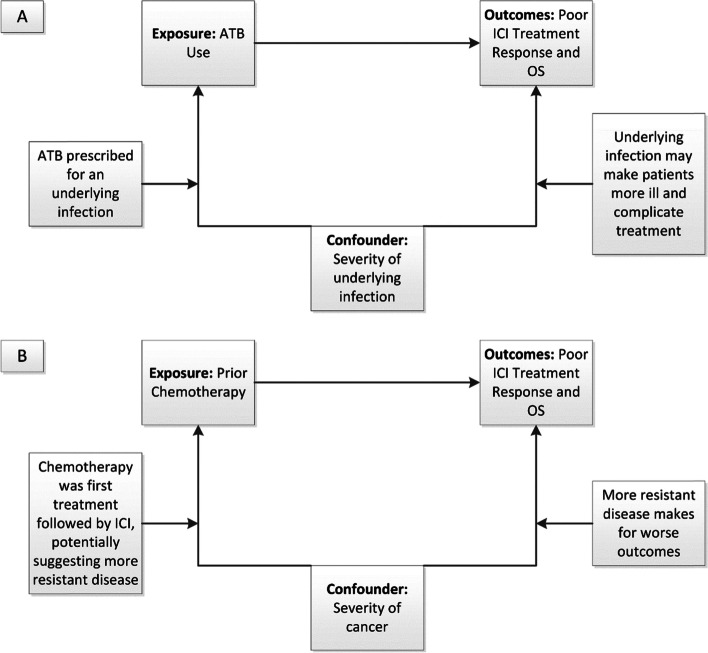Fig. 2.
Example of confounding by indication. Confounding factors are variables associated with both the exposure and outcome of interest (i.e., poor treatment response and OS). A In this study, the reason for ATB use may act as a confounder, whereby an underlying infection, for example, may be indicative of a poorer health status at the start of ICI treatment, predisposing those individuals on ATBs to worse outcomes. B Similarly, having received previous chemotherapy treatment might indicate an inherently more resistant disease phenotype by the start of ICI treatment, predisposing those who had prior chemotherapy to worse outcomes. However, it should also be noted that chemotherapy was the only systemic treatment available as the standard of care for patients from 2011–2015

